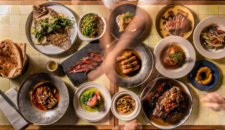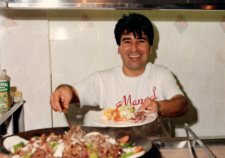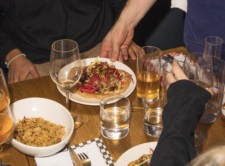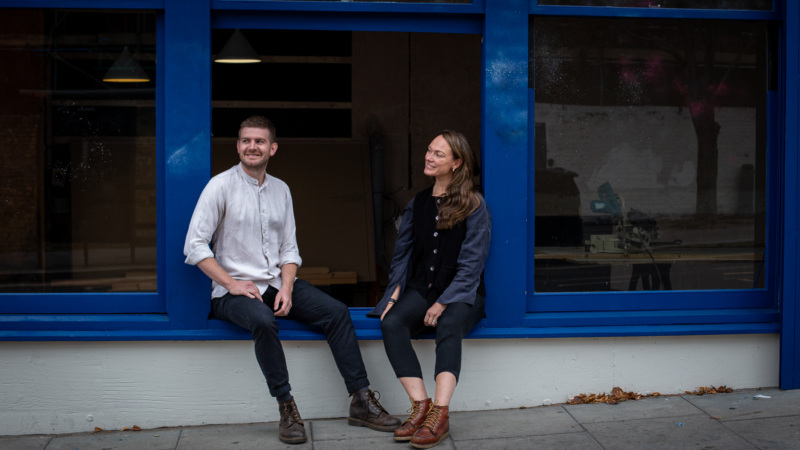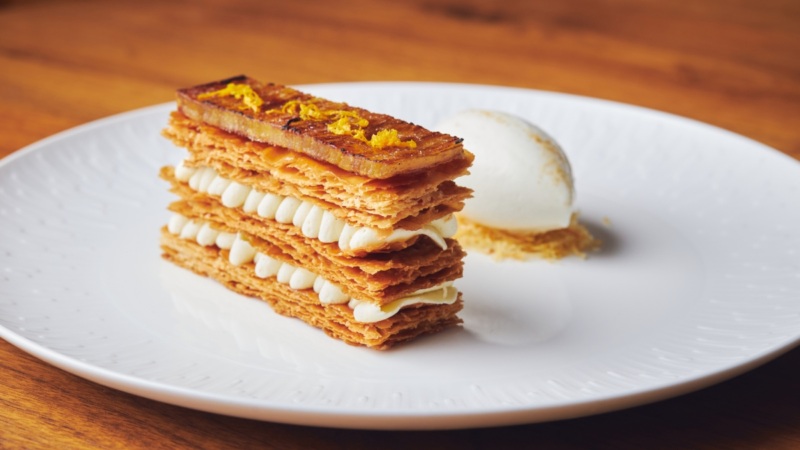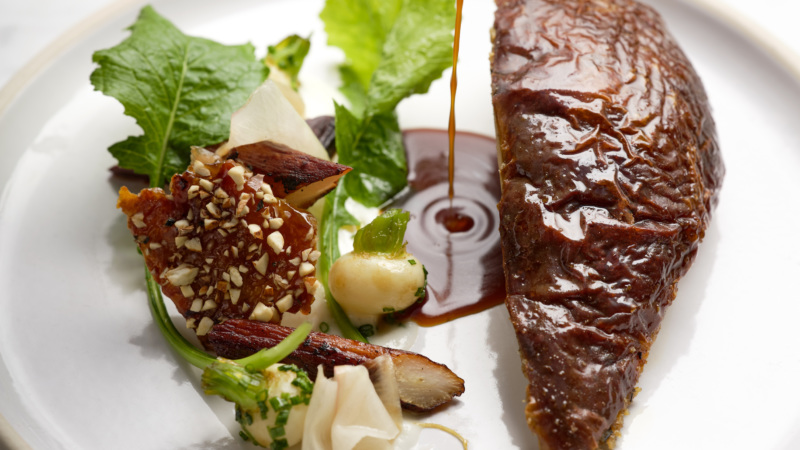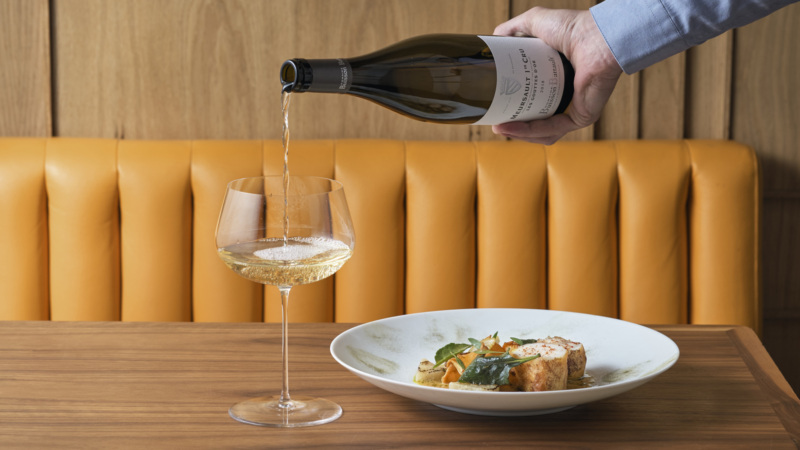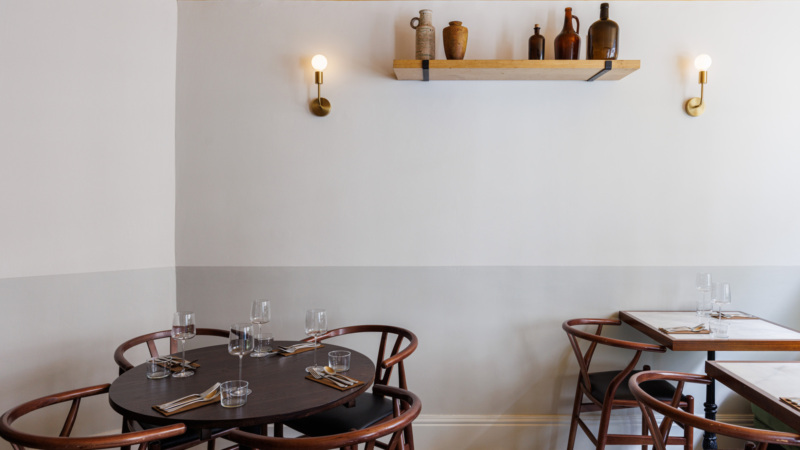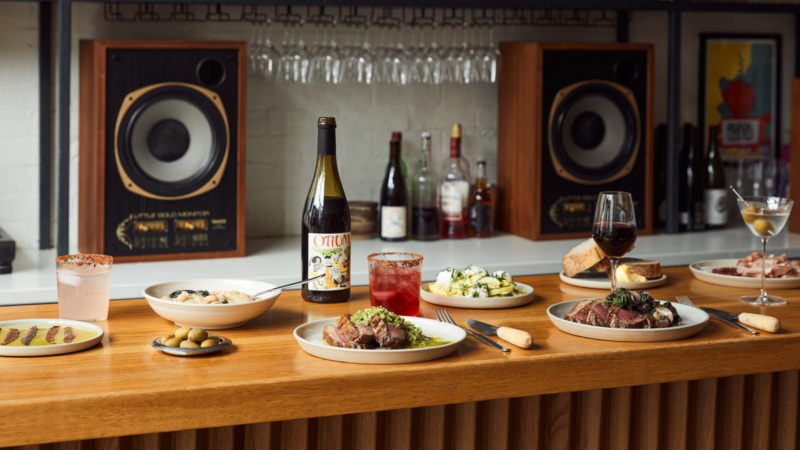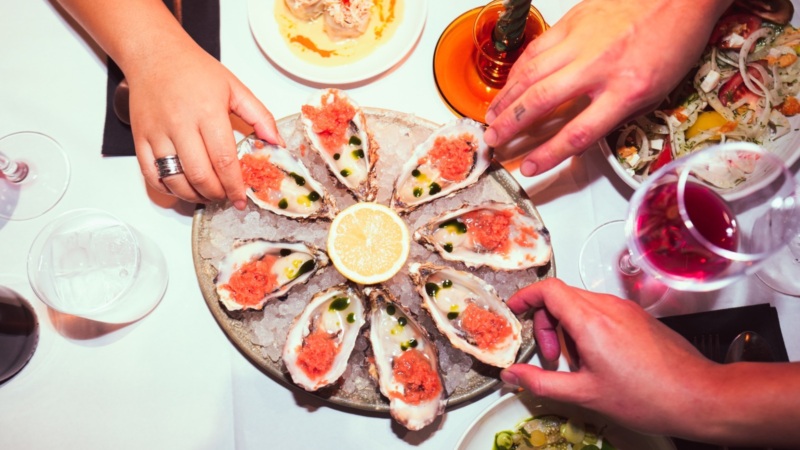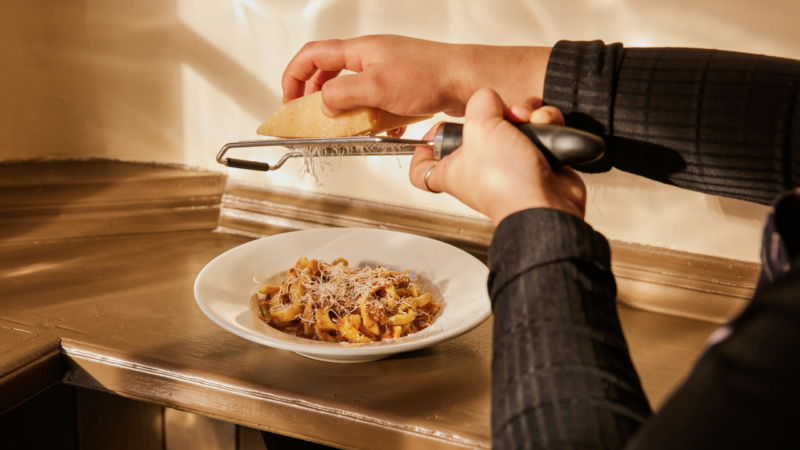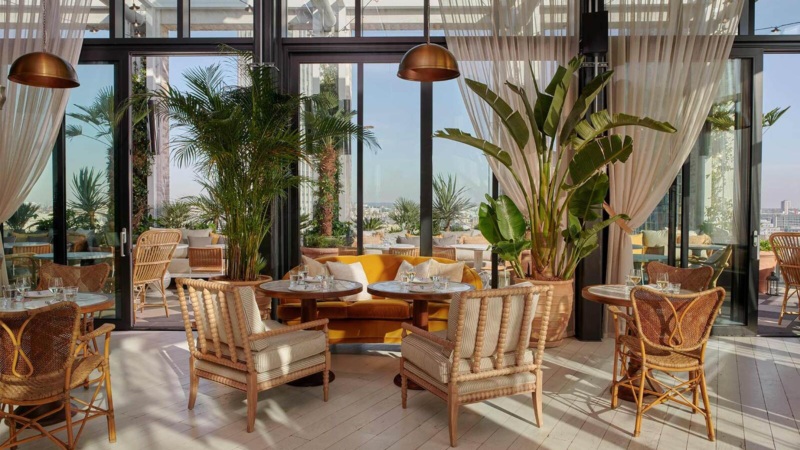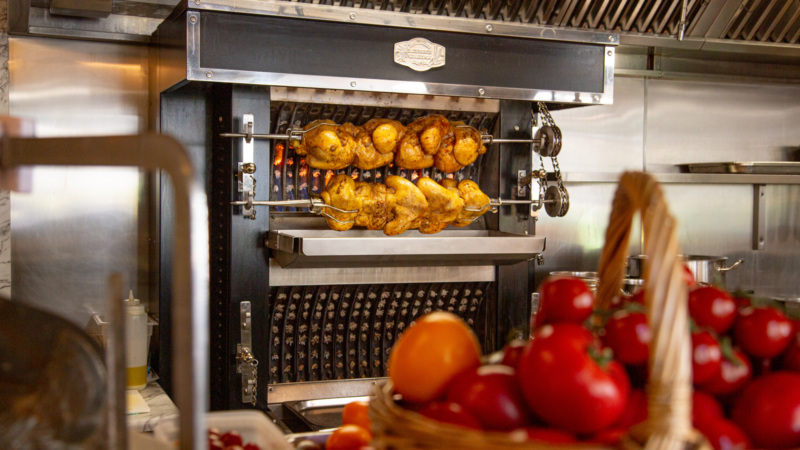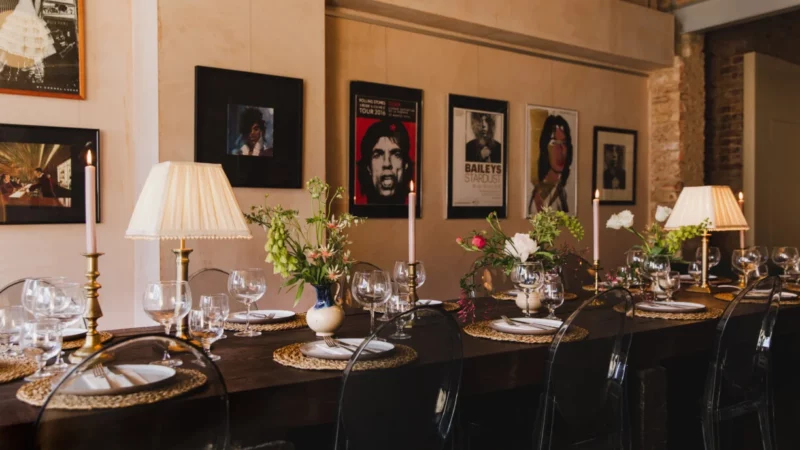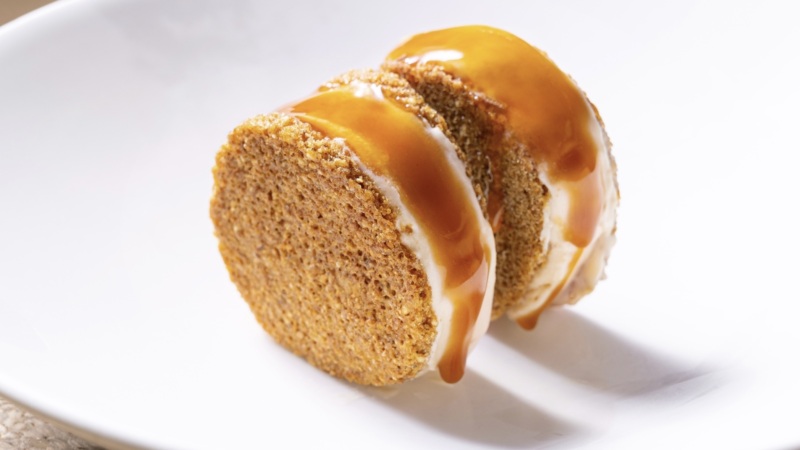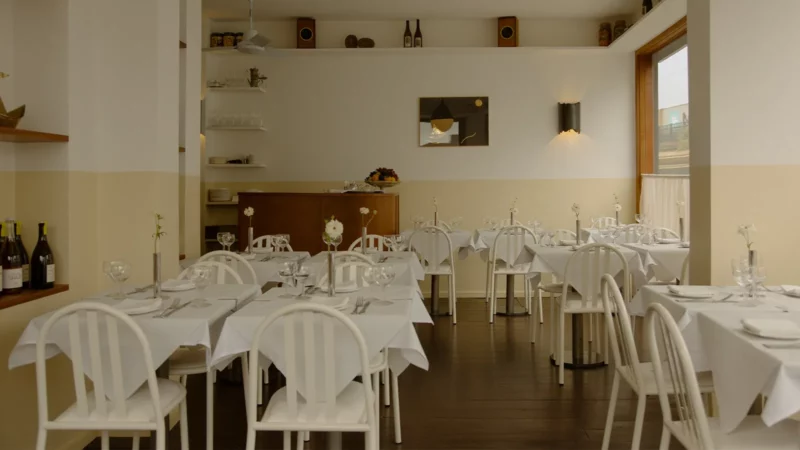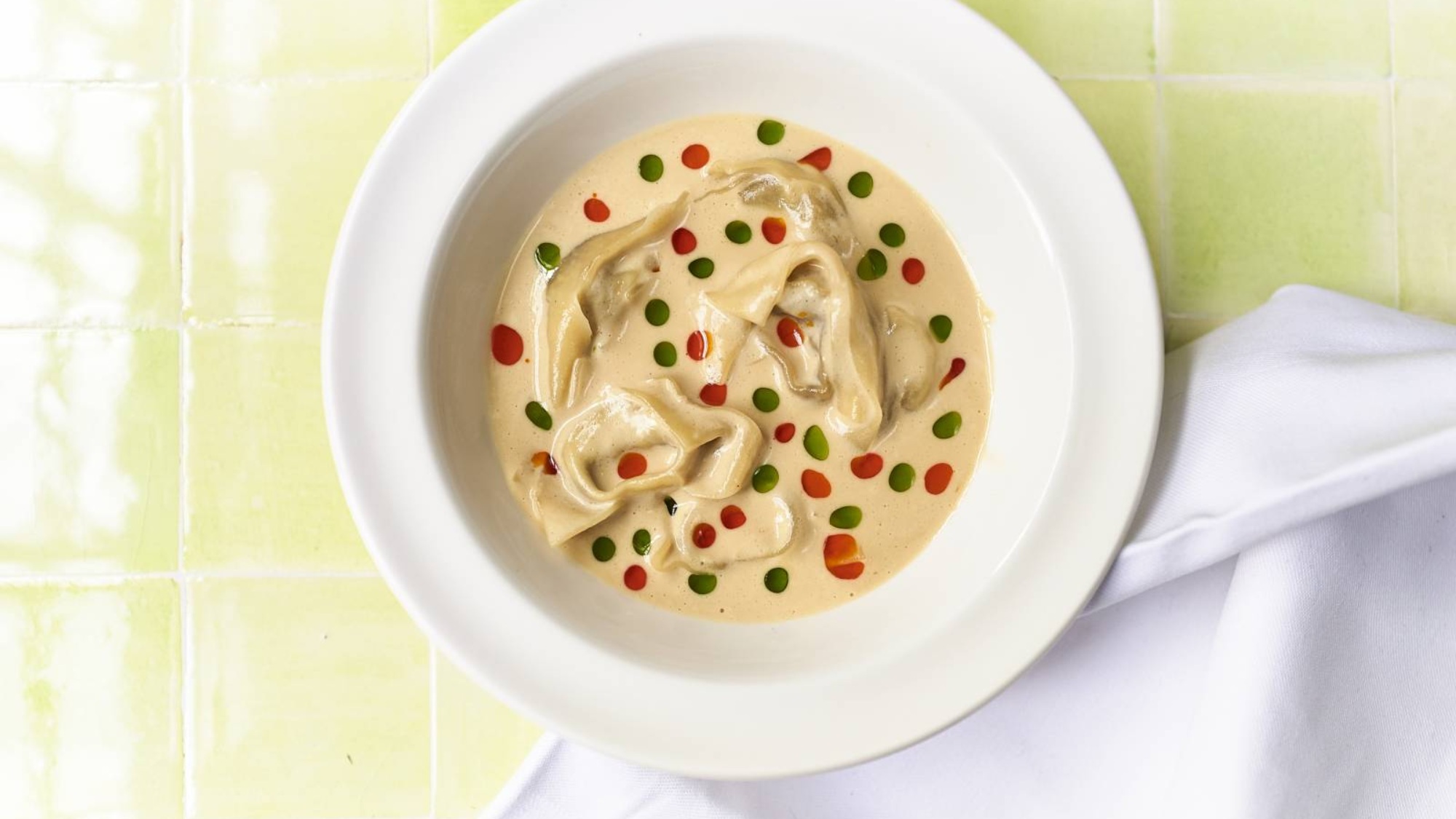
The Power of Great Manti: A Conversation with Civan Er of Yeni
As you enter Yeni, you’ll find its head chef and co-creator Civan Er at the back of the room, carefully orchestrating dishes in an open kitchen, assembled in a meticulous mise-en-scène. The Josper grill at the centre, ordinarily responsible for the rapid grilling of proteins, is adapted by Er, peculiarly but brilliantly, to also complete the final preparation of sauces and the sauteing of vegetables to order.
Er wears his culinary heart on his sleeve. What you see is really what you get, and boy, has the man thought about Turkish food. The downstairs room is adorned with striking paintings of both sides of the Bosphorus – the European side on the West wall of the room, and the Asian side on the East. Tangibly representing the many stripes of Turkey’s culinary soul – with a little more nuance than a simple East/West binary – is a mission Er has held ever since he started cooking.
Er’s story begins in Cihangir, the quaint – and now hip – neighbourhood of Istanbul depicted liberally across the novels of Orhan Pamuk, and the place where the chef grew up.
“Our neighbours were from Antakya, where the earthquake happened,” he tells me. “I first learnt about fermented goat’s yoghurt, cumin, meatballs, pomegranate molasses, and everything like that. My mother became friends with his mother, so their influence came into our house, and at the age of nine or 10, I started using these ingredients. And at that time in Istanbul, nobody knew about pomegranate molasses.”
This was one major influence in his culinary journey, but I asked him what dishes cooked by his own family stand out. There was one dish so formative to his love of food and eventually his career, that the answer was obvious.
“Manti.”
He pauses, sensing that even though that one word may contain a wealth of substance, I probably want to hear more. He then continues, “Like many people, it begins with my mother. She’s a very good cook. She still cooks manti in different ways. There are versions of manti in Turkey, but her best is the regular version, with warm plain yogurt and chilli butter. She makes the manti from scratch, rolling the dough herself.”
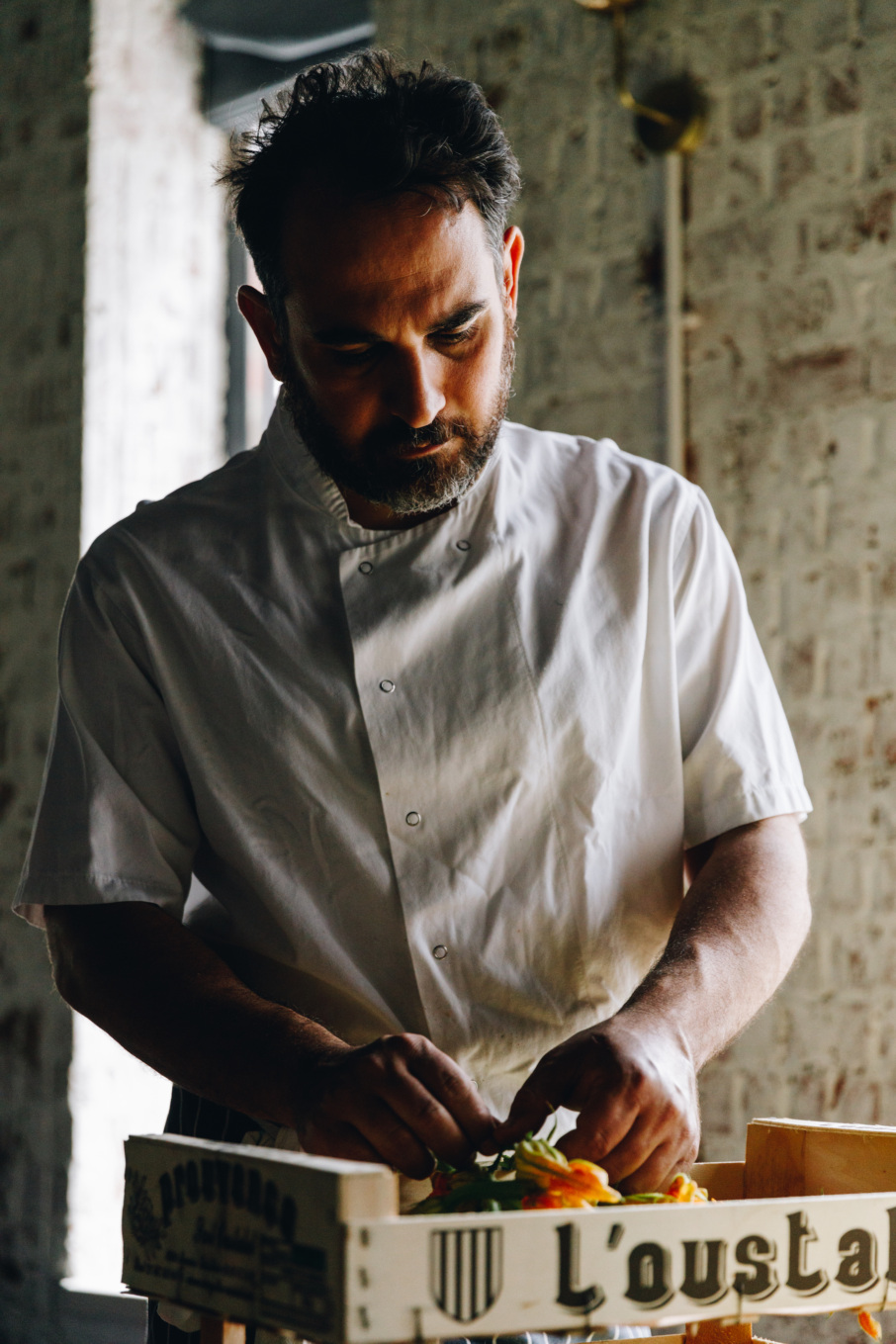

▪️
After taking a job as a chef in central London at the Turkish restaurant Sofra alongside his studies for a master’s in international relations, and then later training at Leiths, he returned to Istanbul to focus on his work as a chef. During this time, he wrote a weekly food column in Hürriyet, a major Turkish daily. After four years of this, he was armed with two hundred recipes, and in 2013, he decided to open a restaurant to showcase them.
Yeni Lokanta – which simply means ‘new restaurant’ in Turkish – was opened in Beyoğlu. Er felt the bohemian neighbourhood was an ideal host for the restaurant’s artisanal approach, which included making homemade yoghurts, tonics, and vinegars. This was where these recipes began cohering into a kitchen philosophy, but one phenomenon continued to emanate the most excitement.
“Our manti was the most popular dish,” he told me, which led him to open a manti bar in a shopping mall, selling them in paper cups, until COVID-19 brought that project to an end.
Meanwhile, the celebration of Yeni Lokanta in Istanbul led Er to begin searching for a second location. After years of looking for a suitable location, Yeni opened in Soho in 2019, a neighbourhood he sees as London’s answer to Beyoğlu. The return to London was obvious to Er and his business partner, who both saw London as uniquely open to novelty. The restaurant received mixed reviews on opening, but it has attracted a loyal clientele and powered through to become a distinctive part of Soho’s restaurant scene, which hitherto had lacked a standout Turkish offering.
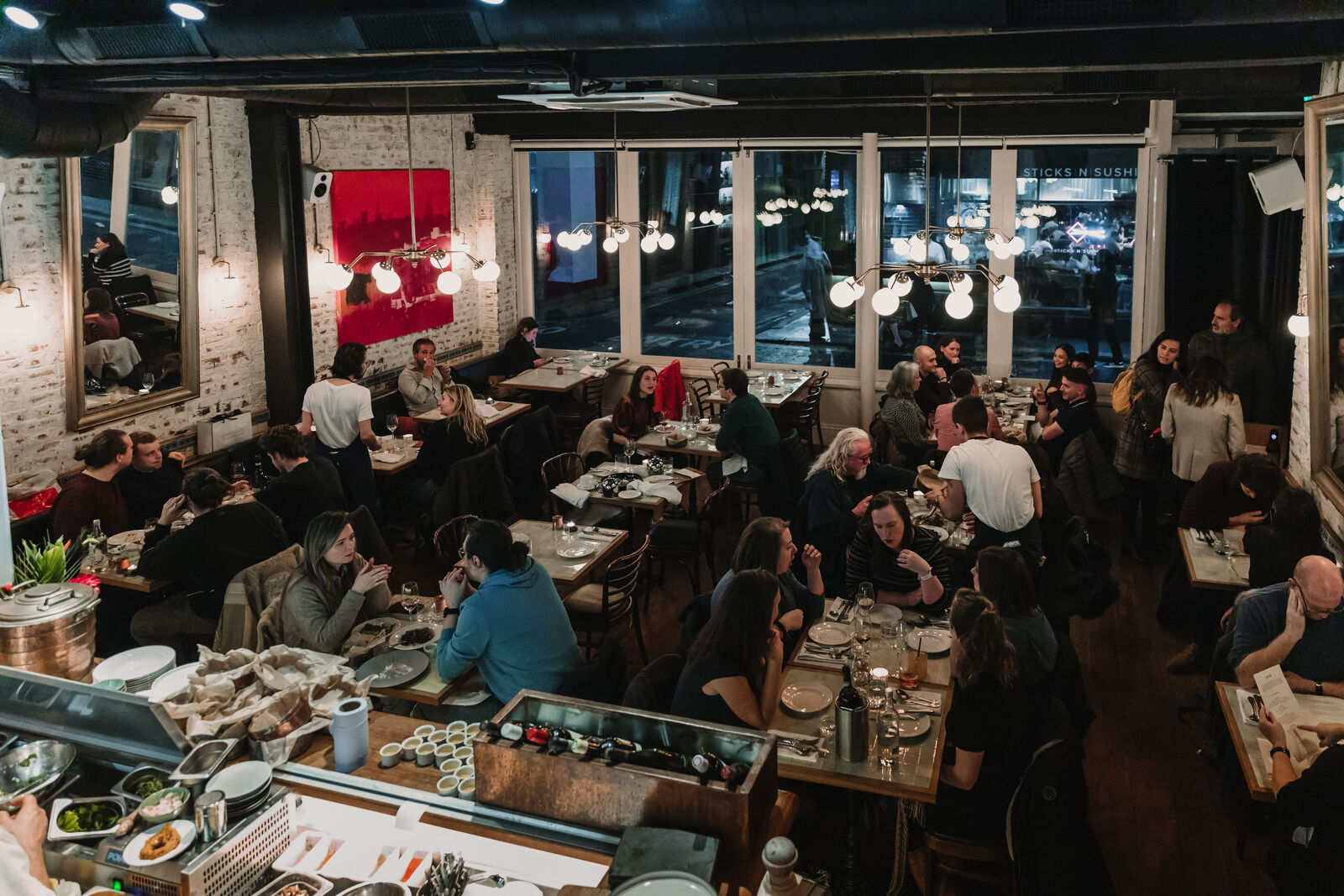

▪️
While London is certainly not lacking in Turkish food – the London ocakbasi is one of the most celebrated styles of restaurant in the city today – with its focus on produce, geographical diversity, and Istanbul restaurant design, Yeni offers something different. Moreover, Er’s manti have continued to feature as a central component of Yeni’s progressive approach to Turkish cuisine. But what is the secret to its magic?
“We have a thinner dough here, which we roll in-house, but we use a different yogurt,” he says. “We get the yoghurt, and we double-ferment it in the oven at a low temperature for eight to nine hours at 80 degrees, to give it depth, and make it tangier and more intense. In Turkey, we use goat’s yogurt from Southern Turkey, Antakya, and Hatay. Here, since we can’t get all dairy products to this country because Turkey isn’t in the EU, we use a blend of Istanbul Village yogurt and our house made yogurt using a starter we brought from Antakya.”
We don’t do kebabs, because we need to show Turkish cuisine is much more than that.— Civan Er
The cleverest element of the dish is the simplicity of the filling. Just minced beef, onion, salt, and pepper, which has the effect of highlighting the sauce’s profound savour. Dotted by lustrous parsley oil and chilli butter like an ebru painting (Er’s precise intention), and enhanced by white wine and ginger, it is rich yet layered, powerful yet subtle. The dish is a fitting metaphor for the cooking at Yeni overall, which manages to display thought-provoking contrasts without making the concept feel grandiose or gaudy.
As Er tells me, “We use basic methods, and try to put our own input into it. We get inspiration from the tradition, but there’s always a twist of ours in every dish. That’s going very well at the moment.”
Elaborating on the richness of traditional Turkish cuisine, he suggests, “I don’t know if you’ve travelled across Anatolia, and outside of Istanbul, but it’s diverse. The ingredients you get in Istanbul are just a tiny part of it. The problem with Turkish cuisine is there are so many. Geographically it was a lucky place, and they benefited from everywhere. We try to represent that as much as possible, and we don’t do kebabs, because we need to show Turkish cuisine is much more than that.”
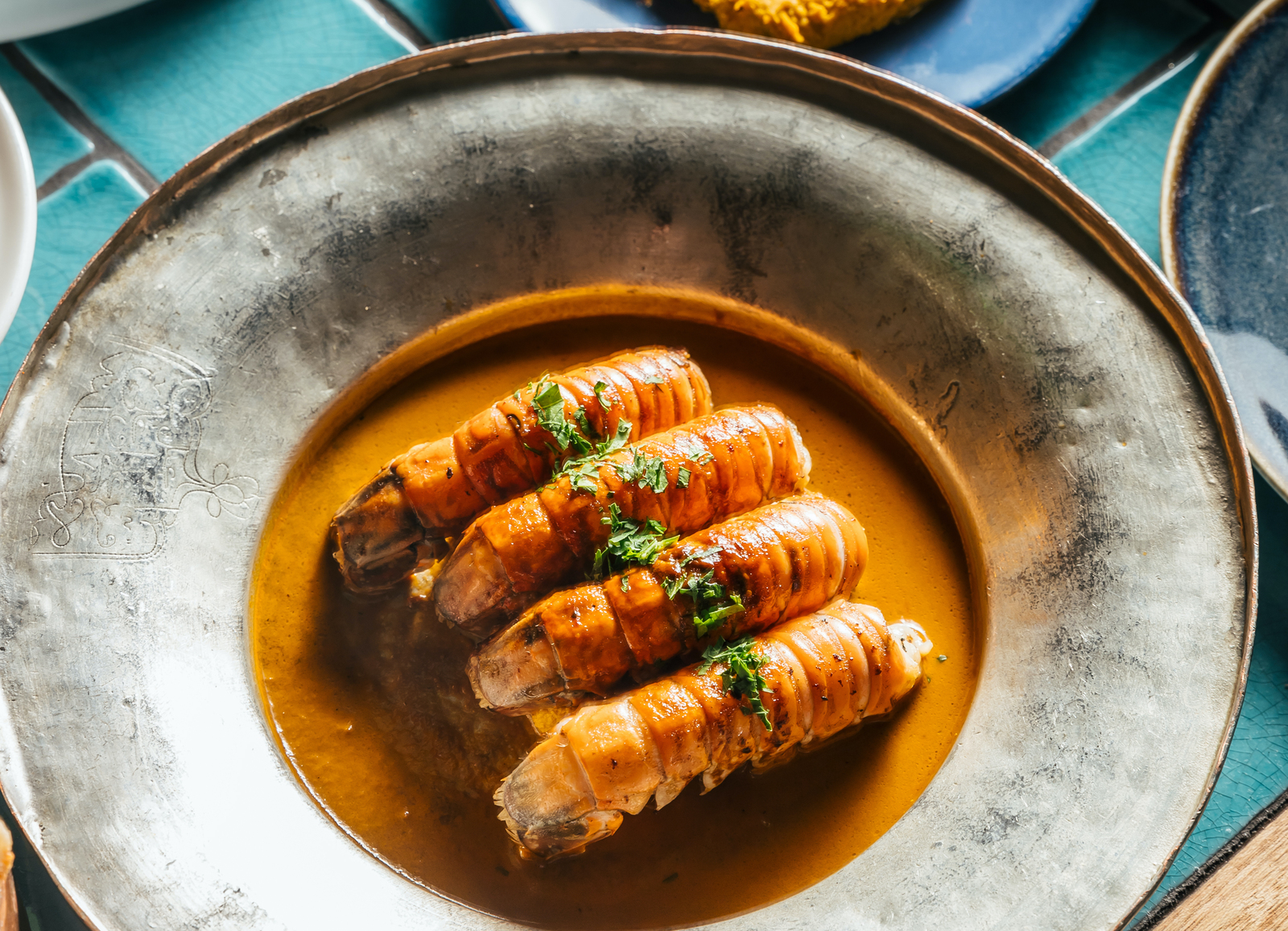
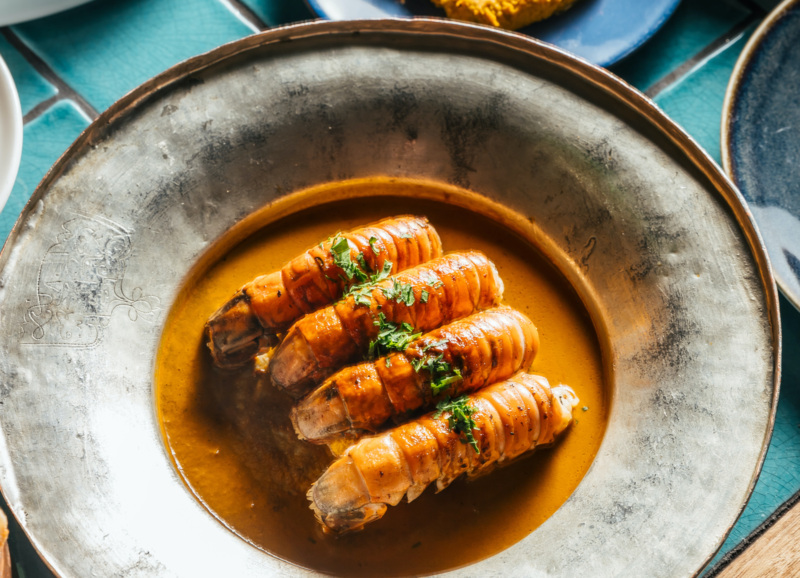
I return to Yeni to eat upstairs several days later. The dining room is a more casual setting, with emerald tiled surfaces on the table and darker tones throughout, making the atmosphere feel ideal for dinner. The lime green lights hanging from the ceiling match the design of the Istanbul restaurant.
Tava bread arrives with smoked butter; a plate of salty sirloin pasturma, carved like jamón; an airy summer dish of mammole artichokes with a textured fava bean purée; and pungent kelle cheese encased in yufka pastry, deep-fried, and drizzled in honey.
Then comes those intoxicating manti; an iridescent dish of blowtorched cured mackerel, swimming on a salad composed of wafer-thin slices of fennel and red onion, pink grapefruit, and orange segments; and a particularly intriguing third dish of Cantabrian anchovies, wild samphire, colatura, and blood orange.
That last dish could be on any Modern European menu in London – but what makes it Turkish?
He tells me, “Anchovies are very popular in Anatolia, wild samphire is from the Western coast but everyone knows it, and colatura is quite Italian but people do a similar thing in northeastern Turkey, in the Black Sea region near the Georgian border. They pile them up, salt them, and press them over a rack. They eat those anchovies all year round, as they’re not always in season, and they use the juice as well. I mean, people think the same way across the world.”
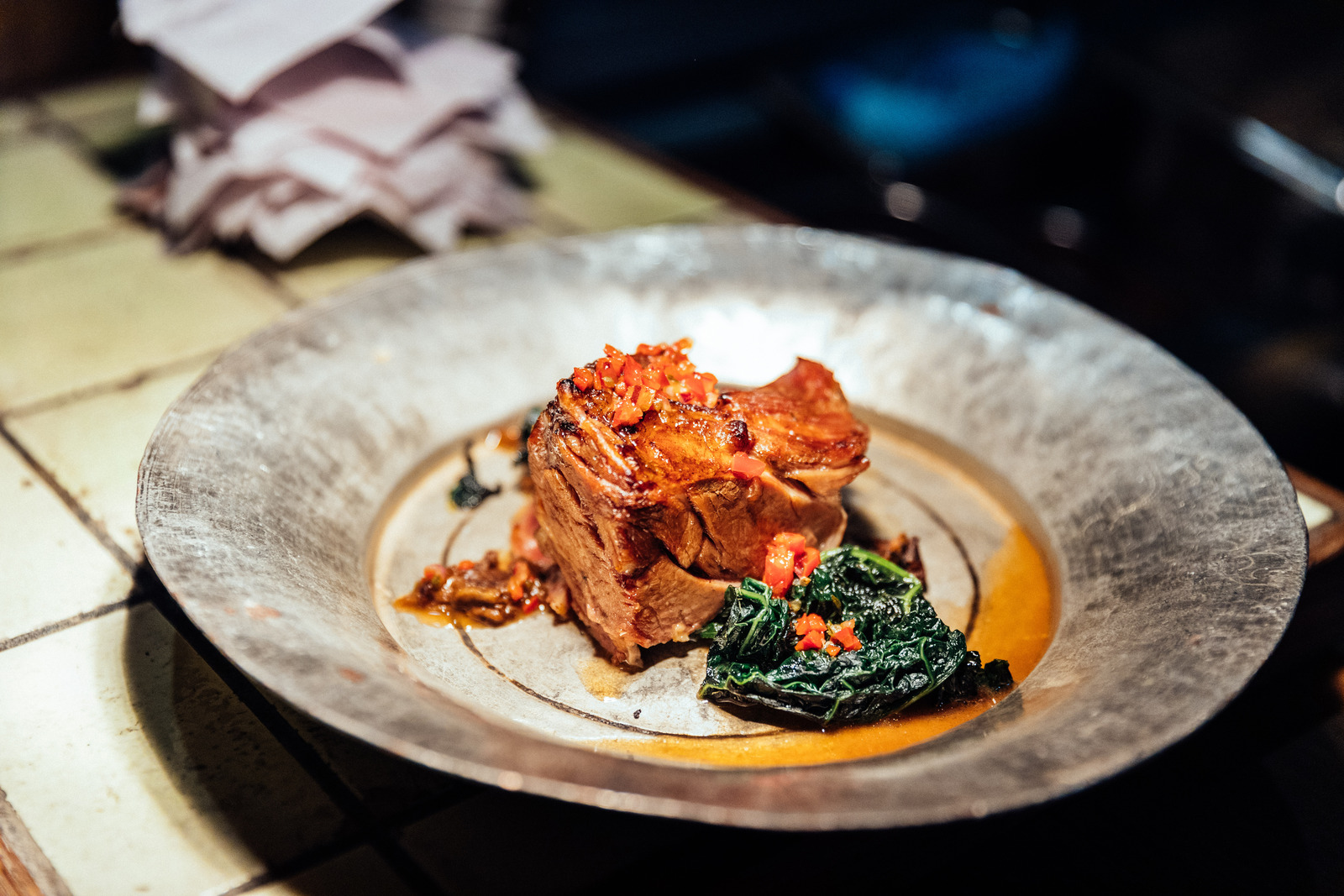
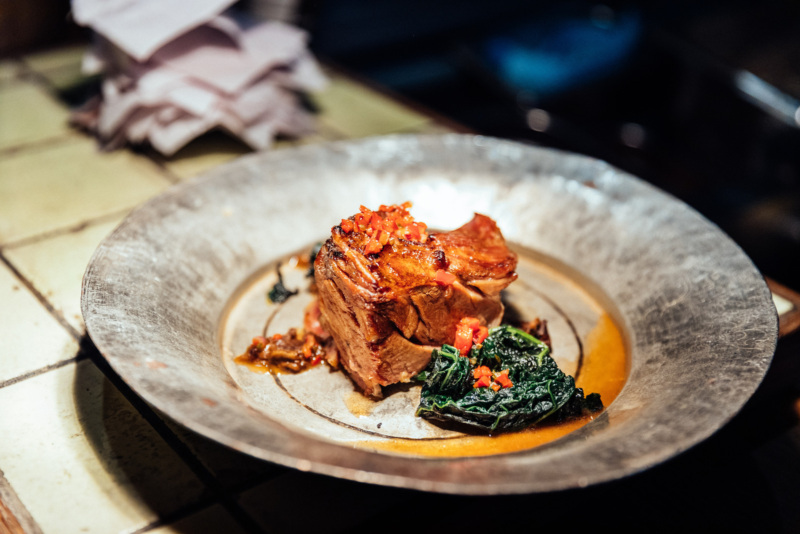
The meal continues with two more lamb dishes. If manti is the most important element at Yeni, then lamb is the second. With symbolism around spring and Qurbani (sacrifice) and a deeply rooted custom of shepherding amongst Ottoman Turks, the combination of religion and terrain has led to the centrality of lamb and mutton in Turkish cuisine, and Er adopts this primacy in his kitchen too. “[Lamb] represents the abundance in one’s dining table, has a unique taste when cooked properly, and I think, therefore, finds its place in most dishes of the region”.
“We get a saltmarsh [lamb] normally when it’s in season, but it is always an organic lamb,” he says. “We get them from Rhug estate, Wales, and then butcher them in house. We use the leftovers for a sausage which we serve upstairs, a spicy one that is fermented and dried over here for a few days. Then we use the shoulder and cuts like that, which we slow-cook and roast in the Josper oven. We choose to butcher it because you can’t make sausage without doing that, and even more importantly, you need lamb fat. You can’t get it from the butcher, because unfortunately in this country, lambs don’t have tails. They tie them up to prevent bacteria. So, when we butcher it, we ensure it is cut with enough fat. This is one of the main reasons we butcher the lamb in house. It also means you can serve different cuts every day. There is no point in serving lamb shoulder for the entire year. So, we do neck one day, another middleneck, and another shoulder. It’s more interesting for the customer.”
While Er also tells me that promoting offal dishes has been trickier than he’d hoped, sweetbreads make an appearance on the menu. The tender browned beauties are served alongside smoked aubergine, a warm cow’s yoghurt sauce, and Maraş tahana, a blend of dried goat’s yoghurt, wheat flour, thyme, and spices, combined, fermented, and then dried in the sun to produce crackers reminiscent of Doritos. As the restaurant practices butchery of the whole animal, Er aims to use of all its parts across the menu. Offering dishes with optional offal has proved an adaptive way to fulfil this aim.
▪️
Er’s style of cooking at Yeni may well be to shed a light on Turkey’s diverse cuisine and move the spotlight from the kebab, but the only kebabesque dish on the menu, irişkit, and the second lamb dish of the evening, are glorious. Also originating in Maraş, where it is known as a kind of sujuk (sausage), The latter appears as a thin, spicy lamb patty with griddle marks that entice the eyes as it hits the table. Accompanying it is the ideal partner, a salad teeming with zing, composed of the freshest of parsley, finely chopped spring onion, pomegranate, and a bulgar flavoured with vişne (sour cherry).
For someone whose goal is to demonstrate the breadth of Turkish cuisine in London, the man knows how to make a kebab. Still, Er lives in De Beauvoir town and regularly eats at Mangal 1, telling me “You can’t make a kebab better.”
With a menu whose influences stretch across the Anatolian plane, from the Aegean coast to the Black Sea, it would not be enough to say Yeni transports you to Istanbul. But to understand what’s happening in Istanbul’s culinary scene, it is a good place to begin. Like the upmarket modern Turkish restaurant culture unfolding in Istanbul, there is a dual focus on preservation and innovation, and Yeni feels closer to that world than the more familiar ocakbasis of Dalston and Haringey Green Lanes.
Trying to portray Turkey’s historic diversity and culinary complexity takes thorough research, but for it to succeed, there is another essential constituent to Er’s more intellectual approach. Cooking the Antakyan ingredients and household favourites he grew up with gives him the most joy, and it’s an emotion that transpires in the kitchen. In his words, “Everybody has a style – ours is what makes us happy.”
Joel Hart is an urban anthropologist and food & drinks writer based in London. Follow him on Instagram. Follow Resy, too.


